Route through the best castles of the Community of Madrid
The Community of Madrid is rich in history and testimony of this are its castles. They are not only strengths, in most cases very well preserved or restored, but also pretend to be living scenarios in which to enjoy theatrical recreations, concerts or exhibitions that show the past life of these medieval monuments.
8 castles of the Community of Madrid to visit as a family
1. Castillo de Manzanares el Real
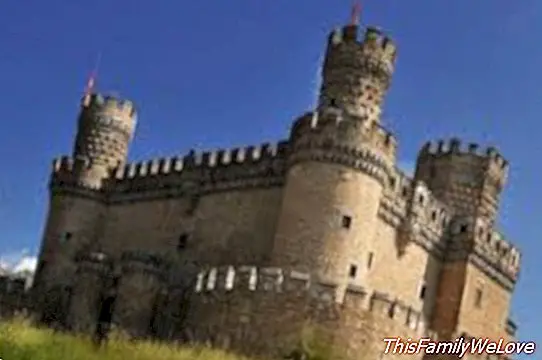
Located at the foot of the Santillana reservoir, is the castle of Manzanares el Real, the most emblematic and best preserved of the Community of Madrid. It was built, in style "Gothic Isabelino", in 1475 by Diego Hurtado de Mendoza. The quadrangular castle is built entirely of granite stone. It has four towers, three circular and the tribute, octagonal. Its vertices are adorned with balls in true Elizabethan style.
2. Castle of Villarejo de Salvanés
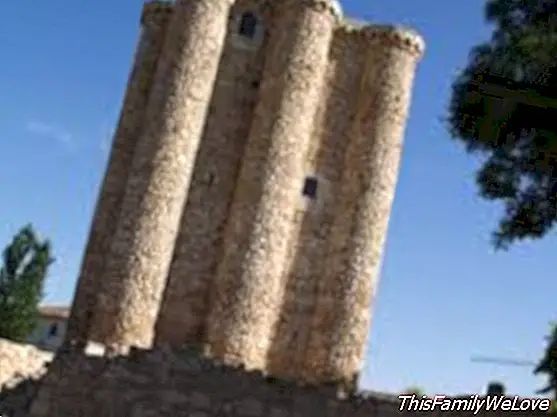
The castle of Villarejo de Salvanés is located in the homonymous municipality in the southeast area of the Community. Although only the keep is preserved, it is a unique architectural example in Spain, as the cubicles are grouped on the sides and not on the edges, as is usual in Spanish military architecture.
There is no consensus when it comes to establishing the date of foundation of this castle. What is certain is that the castle of Villarejo de Salvanés was part of the defensive system that protected the passage through the old Camino de Toledo (or Toledano), as well as for the so-called Senda Galiana (Roman road linking Gaul and Hispania, in use during the Middle Ages).
3. Buitrago del Lozoya Castle
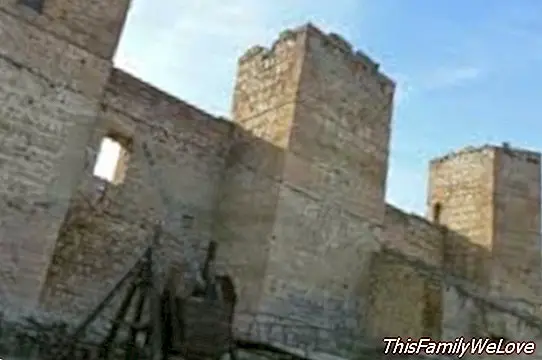
The town, which extends over a meander of the Lozoya River, is in the Sierra de Guadarrama, was one of the main geostrategic enclaves of the Middle Mark of Al-Andalus. From this time dates its walled enclosure, considered the one of greater length of the Community and, next to the same one, is the castle of Buitrago de Lozoya.
Its defensive enclosure is of Muslim origin. Built in the 11th century, it was almost continuously restored up to 400 years later. The wall is constituted by two main elements in a route of more than 800 meters: the low adarve and the high adarve
Its architectural style is Mudejar and its plant is almost square, about 45 meters on each side. It consists of seven towers, which have various shapes (square, rectangular and pentagonal), ashlar and brick, with arches and horseshoe. It has a central courtyard, which is occasionally used as a bullring. It also had a barbican and a pit, but it was destroyed in the 18th century and, since then, it has not been reformed.
Between his visitors and illustrious inhabitants, they appear the pre-renaissance writer Íñigo López de Mendoza, first Marquess of Santillana and count of Real de Manzanares, and Juana the Beltraneja.
4. Castillo de la Coracera
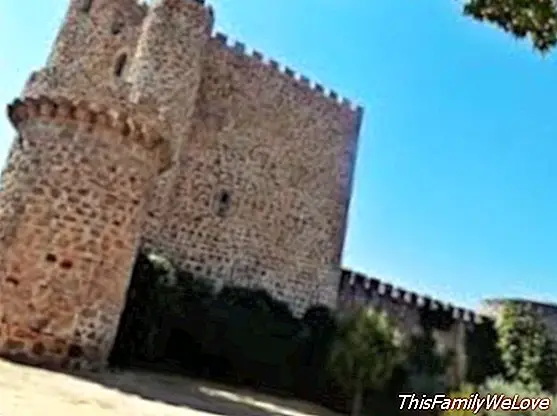
The Castillo de la Coracera is located in the municipality of San Martín de Valdeiglesias, in the southwestern corner of the Community. It is also known as Castillo de San Martín de Valdeiglesias. The denomination "of the Coracera" comes from one of its old proprietors, Antonio Corcuera, whose last name would have degenerated with the passage of time. It was an errata in a publicity pamphlet of the seventies that gave rise to its current name.
The castle was ordered to be built by Álvaro de Luna in the 15th century, as a residence and a hunting lodge. However, there are references to a previous construction, dating from the time of Alfonso VIII of Castile, in the 12th and 13th centuries.
In addition to Álvaro de Luna and his heirs, the fortification has been used by different historical personalities, including Queen Isabella the Catholic, who lived there when she was proclaimed heir to the Crown of Castile.
5. Castle of Aulencia
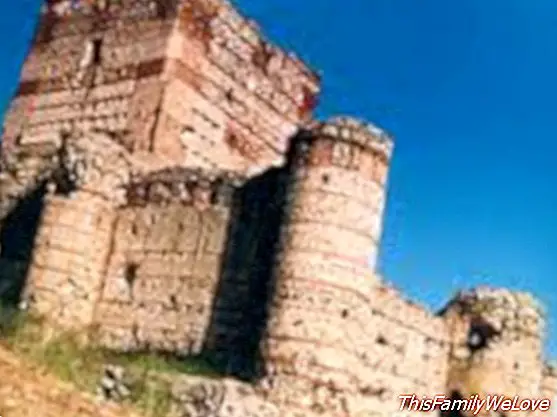
Located in the municipality of Villanueva de la Cañada, the castle of Aulencia stands on the hill Horcajo, located near the confluence of the rivers Aulencia, current from which it takes its name, and Guadarrama.
The castle could have a Muslim origin, although there is not abundant documentation about it, it is supposed to be the residence of the Arab chief of the area, to whom all the surrounding villages paid tribute. The first written references are very later. It is known that, in the 14th century, its owner was García Fernández, and that, in the 15th century, it passed into the hands of Alfonso Álvarez de Toledo, a nobleman in the service of Juan II of Castile. Until almost the 19th century, there are no written references about the castle.
6. Castle of Villaviciosa de Odón
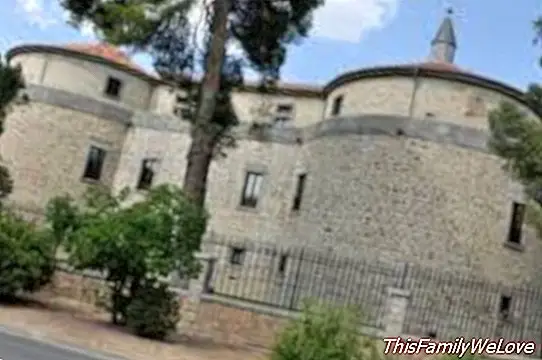
The Castle of Odón was built at the beginning of the 15th century on the initiative of the first Counts of Chinchón. During the communal uprising, Captains Diego de Heredia and Antonio de Mesa, razed the Castle in 1521. In 1583 Don Diego Fernández de Cabrera ordered his reconstruction to Juan de Herrera, the royal architect.
In 1846, the Special School of Forestry Engineers was created, which would occupy and adapt the Castle and the annexed farm two years later. The fort recovered military use in 1886, with the installation of the Colegio de Educandos of the Carabineros Corps, although for a short time. Like other castles, it was used as a barn and house of labor for many years. The Spanish Civil War turned it into a barracks for troops. Finally, in 1965, the State acquired it to restore it in depth and, since 1972, it hosts the Historical Archive of the Air Force.
7. Castillo de Chinchón
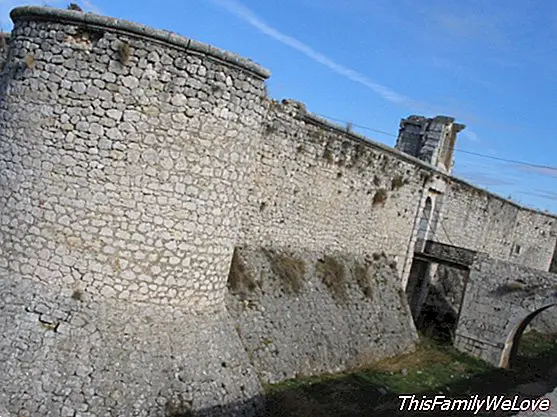
Also called Castillo de los Condes, Chinchón Castle is located south of the town center of the town of the same name. Built in the fifteenth century, it is made up of two imbricate quadrangular bodies, with corners topped by cylindrical towers that are placed in the corners of each of the bodies.
The current castle was built on a former fortress that suffered considerable damage in the attack that made the common troops in the year 1520 so it was demolished and in its place the current one was built between 1590 and 1598. The current building suffered several fires and plundering during the war of the Spanish Succession. Already in the nineteenth and twentieth centuries it was used as a farmhouse and liquor factory.
8. Atalaya de Torrelodones
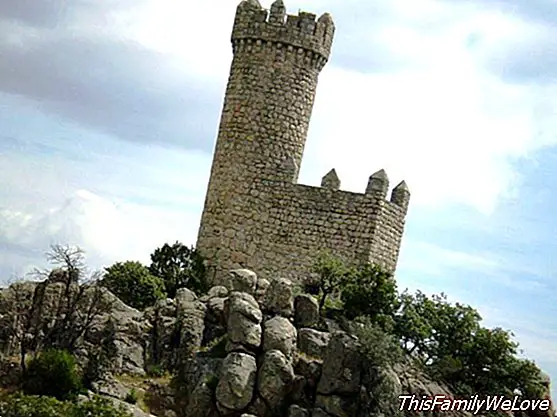
The watchtower of Torrelodones or tower of the Lodones is in the municipality of Torrelodones. It was erected at some undetermined time of the Umayyad period of Al-Andalus, between the ninth and eleventh centuries and had as mission to monitor one of the roads that led to the passes of the Sierra de Guadarrama. The watchtowers were raised at a distance from the natural passes of the Central System, south of the current ports of Somosierra, Tablada or El León, on hills not far from the towns and through successive humadas, warned of possible Christian attacks that they could produce against the most avant-garde Andalusian populations, such as Buitrago del Lozoya, Torrelaguna or Talamanca de Jarama.
The building consists of two parts, the cylindrical tower of eleven meters high and massive up to a height of approximately three meters from the ground. It is crowned by an alternate succession of nine prismatic battlements and nine pyramidal battlements, with a rectangular body on the side. Its sides measure around 5.3 and 3.5 meters. It is also crenellated, with a total of four battlements.
Dove Cambrero
Advice: BungalowsClub




